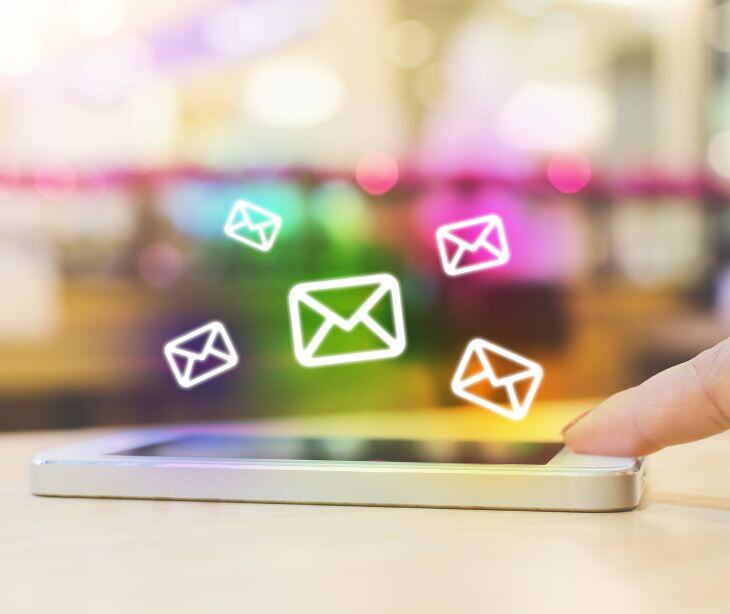
According to the Direct Marketing Association UK, event triggered emails in North America have delivered approximately a 75% higher open rate and a 115% higher click rate than standard "business as usual" emails. Patients are more likely to open and interact with emails relevant to their recent interactions or health milestones. The creation of event triggered HIPAA compliant emails make this end goal a possibility for healthcare organizations.
What are event triggered emails?
An American Marketing Association study offered the following definition: “ Event-based, behavioral messages, or triggered emails correspond to personalized messages that are automatically sent as a response to specific actions or states of customers, and these messages add a new layer of personalization by defining specific events that help to identify the right time to communicate with customers.”
An event-triggered email is a type of automated message sent to individuals when a specific action or event occurs. These emails rely on triggers, which are predefined conditions or user interactions, such as booking an appointment, discharging from a hospital, or reaching a health milestone.
The purpose of event-triggered emails is multifaceted. Primarily, they aim to enhance patient engagement and care by providing timely and relevant information directly related to the patient’s interactions or health status. For example, after a patient books a surgical procedure, they might receive an email detailing pre-operative care instructions or what to expect on the day of their surgery. After a medical visit, a follow-up email could be sent to assess the patient’s satisfaction with their appointment or to provide further health tips related to their condition.
See also: Using HIPAA compliant emails to improve provider collaboration
Types of event triggered emails
- Appointment confirmation emails when a patient books a visit.
- Appointment reminder emails sent before a scheduled healthcare service.
- Follow-up care emails after a patient has received treatment or undergone surgery.
- Prescription renewal reminders when it's time to refill a medication.
- Test result notification emails once medical results are available.
- Birthday messages offering health tips or check-up reminders.
- Health milestone emails celebrating progress in a treatment plan or wellness program.
- Educational emails providing information on managing specific health conditions.
- Feedback request emails after a hospital stay or medical appointment.
- Insurance update emails regarding changes or updates in coverage.
How to create HIPAA compliant event triggered emails
When these emails include or have access to PHI, such as appointment details, medical results, or treatment plans, they must be secured against unauthorized access and breaches. This is why each email sent needs to meet the standard of HIPAA compliant email. Methods of maintaining this compliance while creating event triggered emails include:
- Use encrypted email platforms: Employ email services that provide encryption to protect the content of your emails from unauthorized access. This encryption should be in place both in transit and at rest.
- Dynamic data masking: Use technology that automatically redacts sensitive information in emails. Dynamic data masking can ensure that if certain data must be included in an email for functional reasons, it is displayed only in a masked form.
- Patient identity verification links: Include a secure link in the email that requires patients to verify their identity before accessing their personal information. This can be integrated through a two-factor authentication process that confirms the patient’s identity through an additional security measure like a code sent via SMS.
- Decentralized email dispatch systems: Employ a decentralized system for email dispatch that makes sure that emails containing sensitive data are processed and stored separately from other less sensitive communication.
- Privacy impact assessments for emails: Conduct regular privacy impact assessments specifically for your email communications. These assessments help identify any potential risks in email processes and determine whether additional protective measures are necessary.
- Customized patient communication preferences: Implement a system where patients can customize their communication preferences, including the types and specifics of emails they wish to receive.
See also: Top 12 HIPAA compliant email services
FAQs
How do I obtain and document patient consent for receiving event-triggered emails?
Obtain patient consent electronically or in writing by clearly explaining the use of their email, documenting this consent in their health records.
Can event-triggered emails include links to external sites, and how can these be secured?
Yes, event-triggered emails can include links to external sites; secure these by ensuring the links lead to encrypted, secure websites that comply with HIPAA regulations.
What are the penalties for non-compliance with HIPAA in email communications?
Penalties for non-compliance can range from $100 to $50,000 per violation or per record, with a maximum penalty of $1.5 million per year for violations of an identical provision.
How frequently should a HIPAA compliance audit be conducted on email systems?
Conduct HIPAA compliance audits on email systems annually, or more frequently if changes in technology or business practices occur.
Subscribe to Paubox Weekly
Every Friday we'll bring you the most important news from Paubox. Our aim is to make you smarter, faster.




